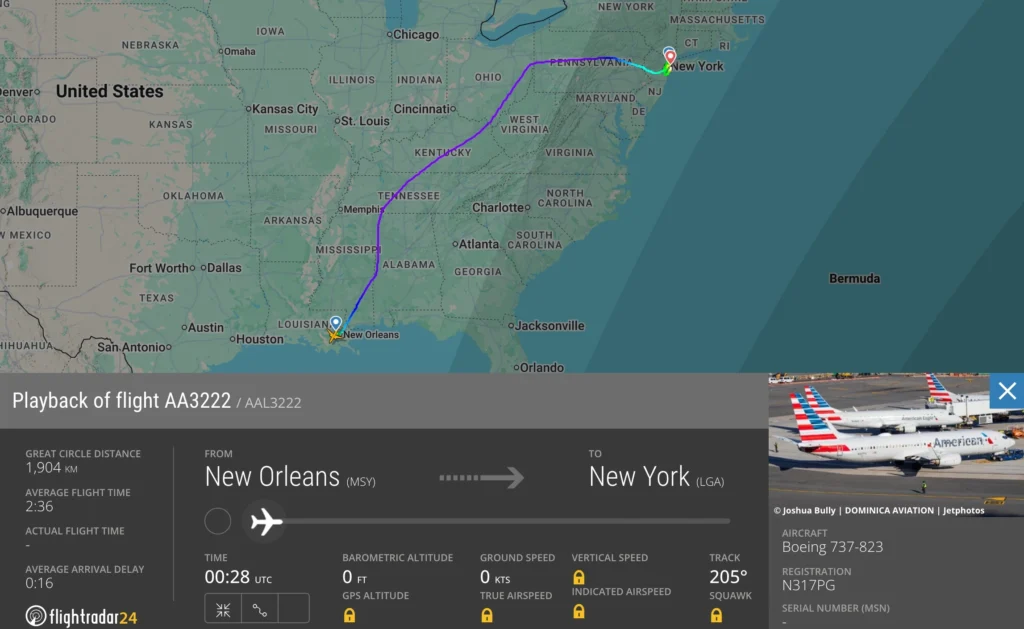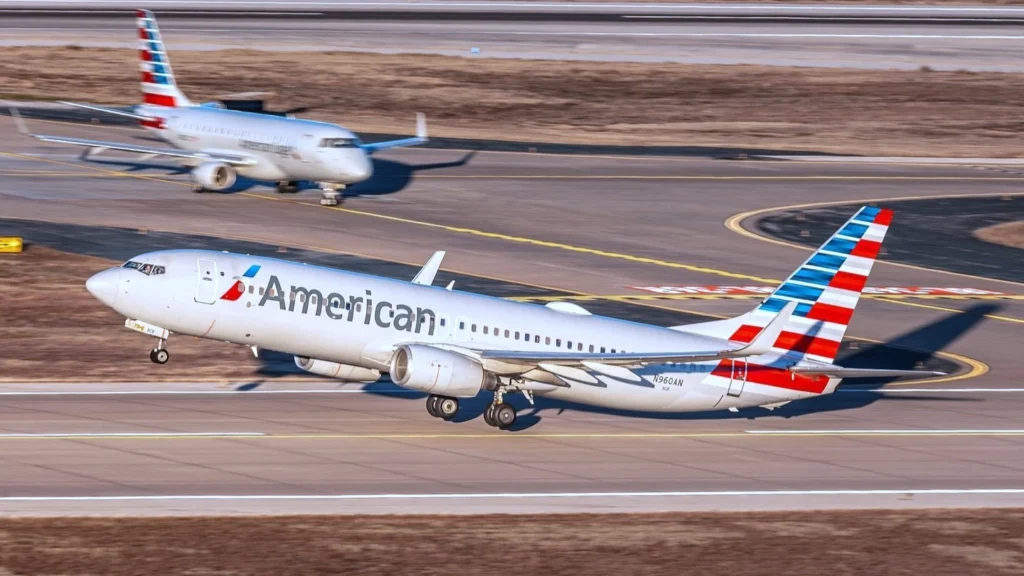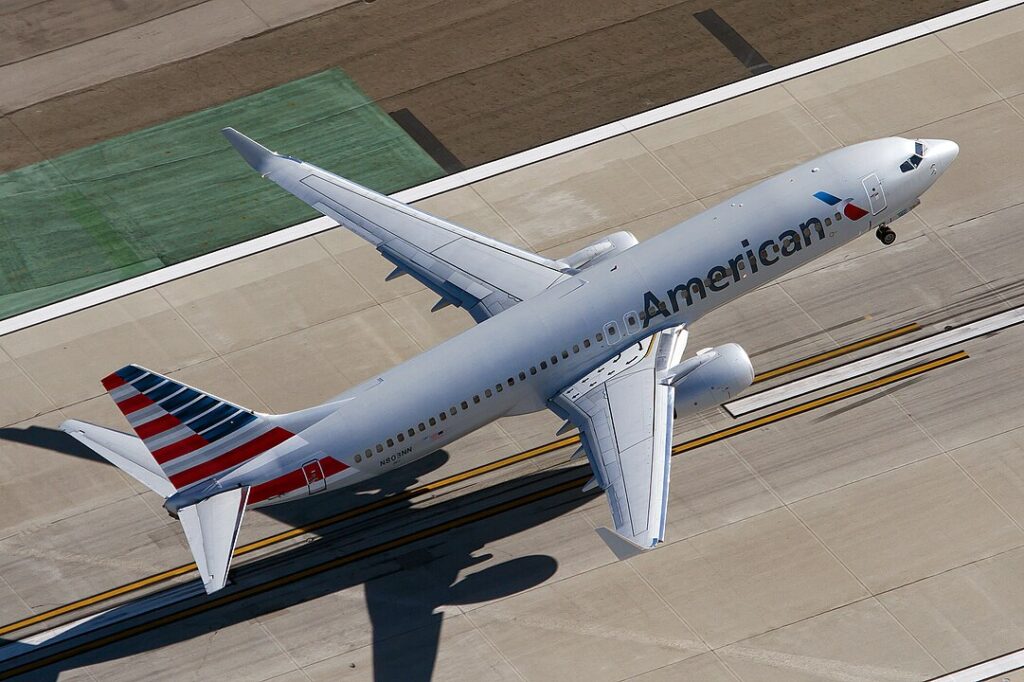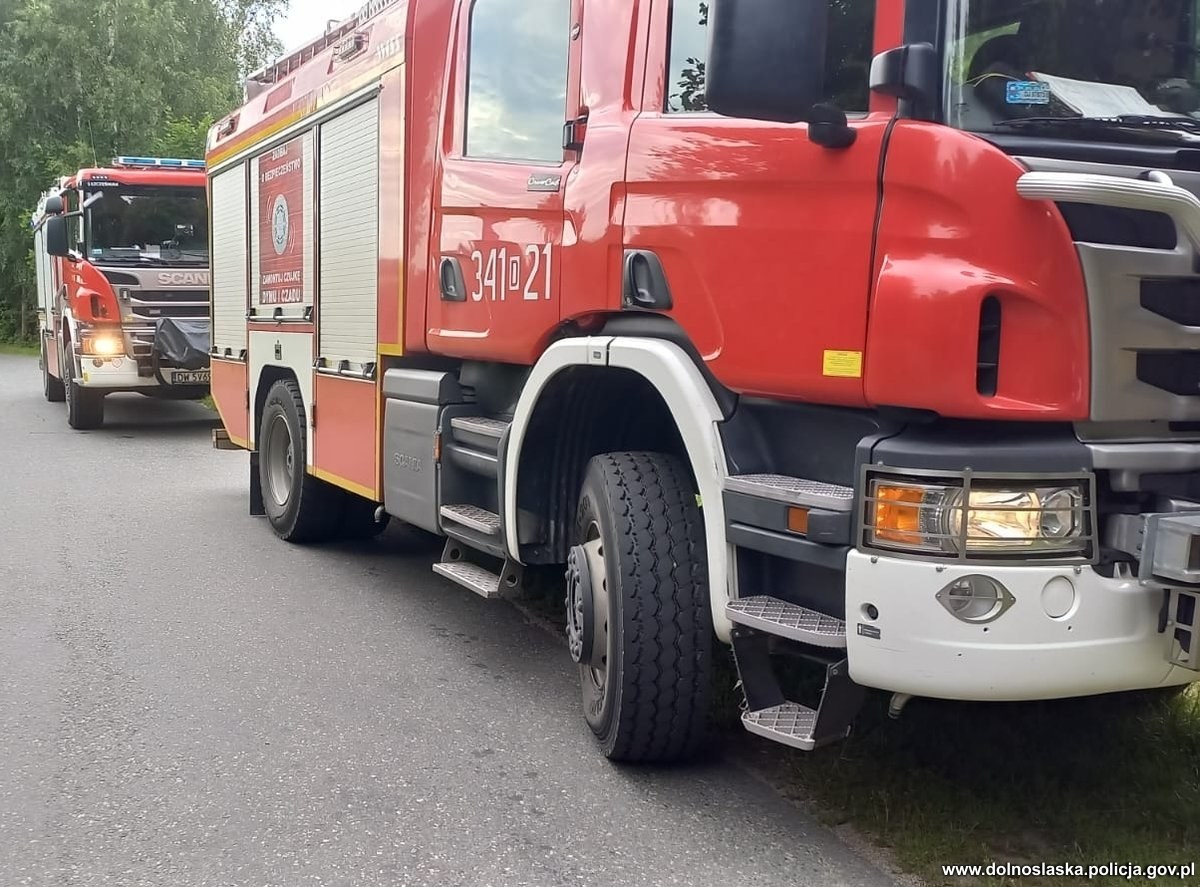
NEW YORK— An American Airlines (AA) Boeing 737-800 operating as flight AA3222 from New Orleans Louis Armstrong International Airport (MSY) to New York LaGuardia Airport (LGA) aborted its landing due to a hydraulic system failure and was diverted to John F. Kennedy International Airport (JFK) for a longer runway.
The aircraft, registered N317PG, landed safely on Runway 4L at JFK after the crew declared an emergency and coordinated with air traffic controllers for a diversion.
 Photo: FlightRadar24
Photo: FlightRadar24American Airlines Flight Diverted to JFK
Flight AA3222 was on final approach to LaGuardia (LGA) when the flight crew reported issues with the hydraulic system.
Although initially cleared to land, the pilots executed a go-around due to an unstable approach and began troubleshooting the problem while maintaining 3,000 feet under ATC guidance.
The issue was later confirmed as a hydraulic system failure, prompting the pilots to request vectors for holding as they consulted their checklists. As the troubleshooting continued, the crew advised ATC that they would need a longer runway than LaGuardia’s to accommodate a potentially compromised landing rollout.
Eventually, the crew declared an emergency and formally requested diversion to New York JFK. ATC cleared the aircraft via radar vectors at 4,000 feet. The flight had 175 passengers on board and reported 11,900 lbs of fuel remaining at the time of diversion.
Summary of Pilots and ATC Comms
During the sequence, the flight crew maintained frequent communication with both LaGuardia and JFK controllers. Key moments included:
- The initial go-around was triggered due to unstable approach conditions shortly before touchdown.
- The crew confirmed a hydraulic system fault and began working through a QRH (Quick Reference Handbook) checklist while coordinating with New York Approach.
- The emergency declaration came after assessing potential issues with braking and rollout distance.
- When asked, the pilots clearly stated they would stop on the runway if needed, and preferred a longer runway at JFK for safety.
Once lined up for ILS 4L at JFK, the flight maintained 180 knots and performed a stabilized approach. Landing was uneventful, and the aircraft vacated the runway under its own power, without requiring ground assistance.
 Photo: Cado Handerson
Photo: Cado HandersonPilots and New York ATC Communication
Here’s the detailed communication between New York JFK ATC and American Airlines pilots as flagged by You Can See ATC:
{ts:21}
Pilot (to Tower): America 3222, 3,400, ILS 4‑22 approach, two-mile final.
ATC: Winds are 05, runway 4—land, runway 4 cleared to land, 3222.
Pilot: 3222.
ATC: And Delta 834 connection, report it.
{ts:42}
ATC: Goodbye 73. Thank you, thanks.
Pilot: Tower, American 3222 going around.
ATC: 3222, on the go, runway heading, maintain 2,000.
Pilot: Maintain 2,000, American 3222.
{ts:60}
ATC: 3222, continue to climb, maintain 3,000.
Pilot: Continue 3,000, American 3222. (Unstable on the approach.)
{ts:69}
Pilot: Negative…we’re going to have to run a QR—system failure.
ATC: System failure, okay. So, runway heading, 3,000, and then New York Approach on 128. Let them know what you need.
Pilot: All right, runway heading to 3,000, and 128.8, American 3222.
{ts:86}
Pilot (to NY Approach): Approach, American 3222 is leveling at 3,000.
ATC: American 3222, New York, roger. You ready to come back and try another approach?
Pilot: Negative. We need a vector, or somewhere to hang out and run a QR.
ATC: American 3222, climb and maintain 4,000, present heading.
Pilot: 4,000, present heading, American 3222.
{ts:118}
ATC: American 3222, what’s the nature of the issue and will this be emergency?
Pilot: It’s a hydraulic system failure and we’re still troubleshooting right now, 3222.
ATC: Okay, just keep me advised.
Pilot: Thank you.
{ts:130}
ATC: American 3222, climb and maintain 4,000.
Pilot: 3222 is leaving 3 for 4. Sorry, sir.
ATC: It’s okay.
{ts:139}
Pilot: Approach, American 3222. We need a braking action report for LaGuardia.
ATC: Last one I got was—good. I’ll get another one.
Pilot: Copy, thank you.
{ts:153}
ATC (to other traffic): American 3221, the one that just rolled out, 73 reported good braking.
ATC (to Pilot): American 3222, the Airbus that just landed also reported good.
{ts:176}
Pilot: Approach, American 3222, we can start vectoring back around.
ATC: American 3222, turn left heading 250.
Pilot: Left 250, American 3222.
{ts:183}
Pilot: Negative emergency.
ATC: Uh, yeah, we’d actually like to declare the emergency.
ATC: Thank you.
{ts:191}
ATC: American 3222, you can proceed direct JACKIE.
Pilot: Direct JACKIE, American 3222.
{ts:202}
ATC: American 3222, heading 220.
Pilot: Heading 220, American 3222.
{ts:213}
ATC: American 3222, flight heading 220.
Pilot: Heading 220, American 3222.
{ts:223}
ATC: Just for my planning purposes, do you plan on stopping on the runway? Need a gap behind you?
Pilot: For American 3222, yeah, let’s just plan for that.
ATC: Okay.
{ts:234}
ATC: American 3222, speed 180 and turn 5 degrees to the left.
Pilot: 5 degrees left, speed 180, American 3222.
{ts:240}
Pilot (to Tower): American 3222, we will stop on the runway, but we expect to be able to clear quickly. It’s a hydraulic problem. As long as we don’t experience trouble, we’ll be able to clear.
ATC: Okay, thanks, 3222. How many on board and fuel remaining when you can?
{ts:268}
Pilot: American 3222, we’d like to just divert to JFK. This emergency is going to affect our landing rollout. We’d rather have a longer runway.
ATC: Okay, cleared to JFK via radar vectors, present heading, climb, and maintain 4,000.
Pilot: We’re at 4,000, present heading, radar vectors JFK, American 3222.
{ts:290}
ATC: American 3222, how many on board and fuel when you can?
Pilot: American 3222, 175 on board. Fuel is 11,900 lbs at this time.
{ts:300}
ATC: American 3222, heading 180.
Pilot: 180, American 3222.
{ts:312}
ATC: American 3222, contact 125.7.
Pilot: 125.7, American 3222.
{ts:324}
Pilot (to JFK Approach): Approach, American 3222 is coming left of 180, 4,000 feet. We’re going to request 4 left.
ATC: American 3222, Roger. Information Lima’s current, altimeter 30.05.
Pilot: We have Lima, 30.05, American 3222.
{ts:340}
ATC: American 3222, just advise when you’re ready for the approach.
{ts:347}
Pilot: American 3222, we are ready for the approach.
ATC: 3222, roger, now heading 180.
Pilot: 180 for now, American 3222.
{ts:354}
ATC: American 3222, turn left heading 070, intercept the 4 left localizer.
Pilot: Left 070 to intercept 4 left localizer, American 3222.
{ts:369}
ATC: American 3222, descend and maintain 3,000.
Pilot: Descend and maintain 3,000, American 3222.
{ts:380}
ATC: American 3222, what’s your current speed?
Pilot: 180 on speed, American 3222.
{ts:388}
ATC: And if you want to slow…
Pilot: Roger, we’ll slow down, American 3222.
{ts:396}
ATC: American 3222, 7 miles from Crystal, 3,000 till established, cleared ILS 4 left approach.
Pilot: Cleared 4 left, American 3222.
{ts:418}
ATC: American 3222, contact Kennedy Tower 119.1, good night.
Pilot: 119.1, American 3222.
{ts:427}
Pilot (to Tower): Tower, American 3222, is 4 left.
ATC: American 3222, runway 4 left, cleared to land. Traffic departing, runway 4 left, cleared to land, American 3222.
{ts:464}
ATC: American 3222, make a left onto Golf and then a right turn onto Bravo. Do you require any further assistance?
Pilot: West on Golf, right on Bravo. No further assistance at this time, 3222.
 Photo: By Fabrizio Gandolfo – https://www.jetphotos.com/photo/8100832, CC BY-SA 4.0, https://commons.wikimedia.org/w/index.php?curid=43525690
Photo: By Fabrizio Gandolfo – https://www.jetphotos.com/photo/8100832, CC BY-SA 4.0, https://commons.wikimedia.org/w/index.php?curid=43525690Bottom Line
American Airlines flight 3222 experienced a hydraulic system failure on approach to LaGuardia, went around, declared an emergency, and requested vectors. The crew decided to divert to JFK for a longer runway due to the emergency affecting landing rollout.
ATC and pilots coordinated for a safe diversion and landing at JFK, including emergency declaration, reporting fuel/passenger count, and request for assistance if needed. The flight landed safely and taxied off the runway without requiring further assistance.
Stay tuned with us. Further, follow us on social media for the latest updates.
Join us on Telegram Group for the Latest Aviation Updates. Subsequently, follow us on Google News
American Airlines Pilots Flies Wrong 787 Aircraft to Italy
The post American Airlines Pilot Requests Longer Runway at New York JFK appeared first on Aviation A2Z.















![Z maczetą na matkę. Agresor z zarzutami [WIDEO]](https://radio.lublin.pl/wp-content/uploads/2025/08/353-273016_g-2025-08-07-210622.jpg)
